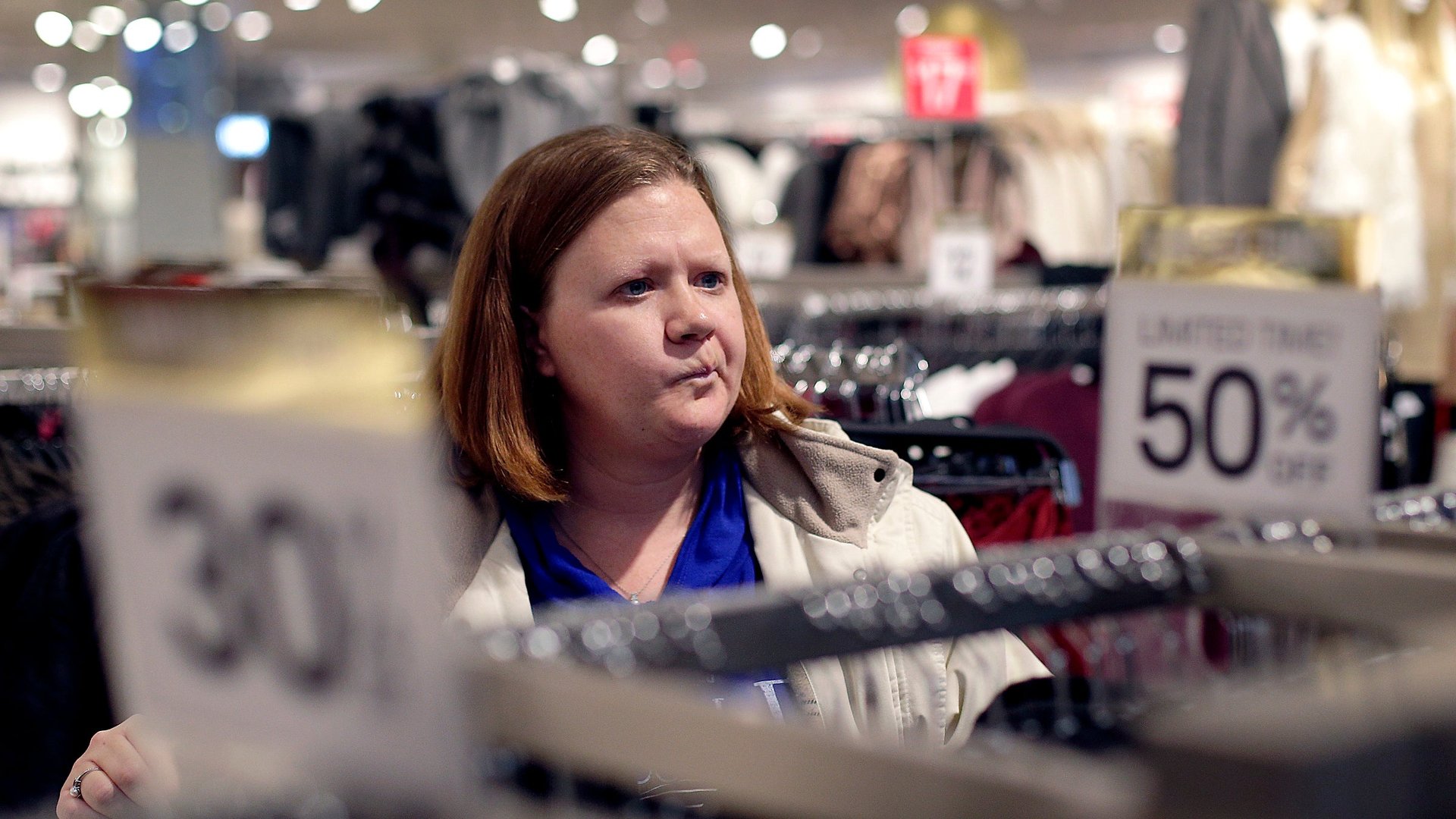Why don’t Republicans and Democrats see the same economy?
Ever since the election of US president Donald Trump, consumer surveyors have noticed a trend: A determining factor for Americans’ economic outlook is whether they are Democrats or Republicans.


Ever since the election of US president Donald Trump, consumer surveyors have noticed a trend: A determining factor for Americans’ economic outlook is whether they are Democrats or Republicans.
Between June 2016 and December 2016—before and after the election—the University of Michigan’s consumer sentiment survey found [pdf] that Democratic consumer sentiment fell almost 13 percentage points on their index, while Republican sentiment rose 40 percentage points. Today, the latest data shows that the divergence ”is still huge, but the gap between Democrats and Republicans narrowed slightly to 55 Index points from 65 three months ago.”
Though the new administration has yet to enact any significant economic policy, there is a logic to the shifting expectations: Republicans are more optimistic because they are expecting Trump’s administration to eventually pass what they see as pro-growth policies—tax cuts, for example—while Democrats become more pessimistic because they fear their unintended consequences.
That makes sense. What makes less sense is that while overall confidence is growing, this increase doesn’t seem to be translating to direct measures of economic activity. While the sentiment survey hit a 13-year high in January, the first three months of the year saw slowing economic growth and consumer spending.
In other words, economists and investors are counting on consumers to tell them their expectations for the economy, but consumers may be offering political opinions instead.
The latest quarter’s economic data is still preliminary and unrevised, and more analysis will be needed to see if the partisan divergence effects the survey and how it is used. But so far, the survey’s director isn’t concerned that the partisan divergence will effect the data’s usefulness.
“People will use the data as long as it predicts,” says professor Richard Curtin, the director of the University of Michigan survey. “And there is no evidence so far that it isn’t a good predictor.”
The survey is a leading indicator of inflation, the unemployment rate, and personal consumption expenditures, Curtin says. Personal consumption spending increased at an annualized rate of 0.3% in the first quarter of 2017 (the most sluggish growth since 2013), but the Michigan survey forecasts 2.3% growth over the full year, only slightly slower than in 2016.
The remarkable divergence in partisan responses to the survey is a transient phenomenon that will pass, according to Curtin, unlike larger demographic changes. The two partisan preferences cancel themselves out, with self-identified independents driving the aggregate results of the data, he says, adding that questions about partisan disparities effecting the survey are ”naive” and the “wrong approach.”
“It is a losing strategy for either side to promote such unrealistic economic prospects,” Curtin wrote in January. “Indeed, in the months ahead, it is more likely that economic optimism will improve among Democrats and decline among Republicans.”
So far, Curtin’s prediction has been true, but partisan views of the economy can last longer than expected. Gallup’s consumer survey reported a massive gap in economic confidence ahead of the 2012 election. That survey raised similar questions about political polarization and perceptions of the economy.
Research into the predictive utility of consumer surveys like these has found that they tend to be useful at predicting future activity, but also that they can change and be effected by non-economic factors.
This OECD working paper comparing 30 years of consumer surveys across eight countries found that while they were useful prediction tools, they weren’t correlated to any one set economic indicators across different countries. Instead, consumer confidence indicators were more predictive during major economic shocks that gain consumer attention, and could be affected simply by “intense political debate” about public finances or the welfare state.
Another interesting example comes from the Federal Reserve Bank of San Francisco, where researchers wondered about periods where “consumer sentiment is driven away from what economic fundamentals suggest.” Their culprit? The media. Assuming that many people form their conceptions of the economy based on what they read about it, the researchers tested measures of media coverage of the economy against changes in the sentiment index. They found coverage of layoffs or other bad economic news coincided with more negative sentiment than other indicators suggest.
These findings suggest that as long as US political debates and news coverage remain deeply polarized, so will American views of the economy. Only time can tell if that will make prosperity harder to predict.